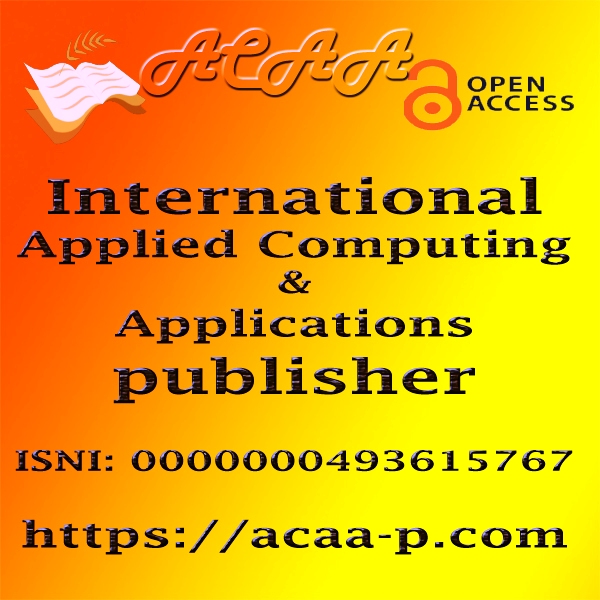Artificial Intelligence Papers & Publications
Estimation of snr based adaptive-feedback equalizers for feedback control in hearing aids
Despite the evolution of modern technology, the users of hearing aids do not realize the persistence of feedback, while wearing the device until the condition becomes worse. The feedback cancellation algorithms, instead of cancelling the acoustic feedback, limits speech intelligibility. The paper presents a novel method for estimation of SNR based adaptive-feedback equalizers (SBAFE) algorithm to develop an optimized hearing aid for the feedback less sound transmission and achieving better speech discrimination. The data gathered for the optimization is visualized and compared with the traditional technology, which provides the subjective and objective quality of the hearing aids.
Implementation of big data analytics for simulating, predicting and optimizing the solar energy production
The notable developments in renewable energy facilities and resources help reduce the cost of production and increase production capacity. Therefore, developers in renewable energy evaluate the overall performance of the various equipment, methods, and structure and then determine the optimal variables for the design of energy production systems. Variables include equipment characteristics and quality, geographical location, and climatic variables such as solar irradiance, temperature, humidity, dust, etc. This paper investigated and reviewed the current big data methods and tools in solar energy production. It discusses the comprehensive two-stage design and evaluation for examining the optimal structure for renewable energy systems. In the design stage, technical and economic aspects are discussed based on a robust analysis of all input/output variables for determining the highest performance. Next, assess and evaluate the effectiveness of each method under different circumstances conditions. Then convert each qualitative indicator into a quantitative measure using extensive data analysis methods to determine the overall performance of the various qualitative variables. The paper also provides an in-depth analysis of the mathematical techniques used in measuring the efficiency of the renewable energy production system and discussing future axes of work in the field of specific energy.
Credit risk analysis- a case study of canara bank
All the people who need loan may turn to their local banks, credit unions or peer to peer lenders. Every lending institution has its own advantages and drawbacks. In this scenario credit risk management becomes increasingly important element as the same is concerned with managing the financial debts and safeguarding the interest of the banks. The purpose of credits given by banks is to earn interest and make profits. The important function of credit management is to decide how much credit should be given to the borrower and ensuring compliances with the credit terms of repayment and avoid Non-Performing Assets (NPA) to the banks. Credit risk is the biggest risk the bank faces by the virtue of nature of business, inherits. The ability of commercial banks to formulate and adhere to policies and procedures that promote credit quality and curtail non-performing loans is the means to survive in the stiff competition. Inability to create and build up quality loans and credit worthy customers leads to default risk and bankruptcy as well as hamper the economic growth of the country
A comparative study of credit risk management: a case study of canara bank and karnataka bank.
Banks need finance to carry out their day to day activities smoothly. There will be times where the borrowers fail to repay the money leading a risk to the lenders. There are various types of risks faced by the banks such as financial and non-financial risk in the unstable environment. These risks may be a threat for the existence and achievements of banks. A Credit risk is the risk which arises when the borrower fails to make required payments. It is a huge loss to the lender where he loses both the principal and interest which leads to the interruption of the cash flows and increase in collection costs. Banks usually follow a certain framework while lending loans so that they can manage the credit risks. The main purpose of credit risk management is to find out how much credit should be provided to the borrowers and the different ways to collect the amount back. The success of banks depends on the formulation of the policies and procedures of lending the loans and collecting the amount back and avoid Non-Performing Assets (NPA) to the banks. When banks collect their debts systematically and avoid the Non- Performing Assets (NPA), they can survive in the competitive market. The study is focused on the comparison of two banks such as Canara Bank and Karnataka Bank with regard to loans, advances, interest received and expended and the variation in the levels of Non- Performing Assets. Methodology used is the secondary source of data where the balance sheet of the banks and the income and expenditure statement of the banks are being used to explore the credibility and the capacity of the banks in managing the credit risk.
Formulation and evaluation of herbal face pack
formulation and evaluation of herbal face pace pack
A novel heuristic for the transportation problem: dhouib-matrix-tp1
The transportation problem is widely applied in the real world. This problem aims to minimize the total shipment cost from a number of sources to a number of destinations. This paper presents a new method named Dhouib-Matrix-TP1, which generates an initial basic feasible solution based on the standard deviation metric with a very reduced number of simple iterations. A comparative study is carried out in order to verify the performance of the proposed Dhouib-Matrix-TP1 heuristic.
N-gram and k-nearest neighbour based igbo text classification model
The evolution in Information Technology has gone a long way of bringing Igbo, one of the major Nigerian languages evolved. Some online service providers report news, publish articles and search with this language. The advancement will likely result to generation of huge textual data in the language, that needs to be organized, managed and classified efficiently for easy information access, extraction and retrieval by the end users. This work presents an enhanced model for Igbo text classification. The classification was based on N-gram and K-Nearest Neighbour techniques. Considering the peculiarities in Igbo language, N-gram model was adopted for the text representation. The text was represented with Unigram, Bigram and Trigram techniques. The classification of the represented text was done using the K-Nearest Neighbour technique. The model is implemented with the Python programming language together with the tools from Natural Language Toolkit (NLTK). The evaluation of the Igbo text classification system performance was done by calculating the recall, precision and F1-measure on N-gram represented text. The result shows text classification on bigram represented Igbo text has highest degree of exactness (precision); trigram has the lowest level of precision and result obtained with the three N-gram techniques has the same level of completeness (recall). Bigram text representation technique is extremely recommended for any text-based system in Igbo. This model can be adopted in text analysis, text mining, information retrieval, natural language processing and any intelligent text-based system in the language.
Design and development of framework for big data based smart farming system
Improving the agricultural productivity is an imminent need to meet the food requirement of constantly growing population rate. It can be gracefully satisfied if the farming process is integrated through technologies such as big data and IoT. The integration of agricultural processes with modern technologies has emerged as the smart agriculture technology. This research work is focused on proving the suitability of the big data analytics for smart agricultural processes in terms of increasing production and quality of yields with less resources and overhead. This research paper expounds the extensive review carried out on the related works in smart agricultural farming, challenges in implementing the smart farming technologies at large scale, followed by the conceptual framework model for the effective implementation of big data together with IoT devices in smart farming.
Comparative analysis of different crossover structures for solving a periodic inventory routing problem
One of the most important challenges for a company is to manage its supply chain efficiently. One way to do this is to control and minimize its various logistics costs together to achieve an overall optimization of its supply network. One such system that integrates two of the most important logistics activities, namely inventory holding and transportation, is known as the inventory routing problem. Our replenishment network consists of a supplier that uses a single vehicle to distribute a single type of item during each period to a set of customers with independent and deterministic demand. The objectives considered are the management of supplier and customer inventories, the assignment of customers to replenishment periods, the determination of optimal delivery quantities to avoid customer stock-outs, the design and optimization of routes. A genetic algorithm (GA) is developed to solve our IRP. Different crossover structures are proposed and tested in two sets of reference instances. A comparison of the performance of different crossover structures was established. Then, it was used to find the most appropriate crossover structure that provides better results in a minor computation time. The obtained results prove the competitiveness of GAs compared to literature approaches, demonstrate the performance of our approach to best solve large scale instances and provide better solution quality in fast execution time.
A memetic algorithm for the inventory routing problem
In this article, we study an Inventory Routing Problem with deterministic customer demand in a two-tier supply chain. The supply chain network consists of a supplier using a single vehicle with a given capacity to deliver a single product type to multiple customers. We are interested in population-based algorithms to solve our problem. A Memetic Algorithm (MA) is developed based on the Genetic Algorithm (GA) and Variable Neighborhood Search methods. The proposed meta-heuristics are tested on small and large reference benchmarks. The results of the MA are compared to those of the classical GA and to the optimal solutions in the literature. The comparison shows the efficiency of using MA and its ability to generate high quality solutions in a reasonable computation time.
Design and development of framework for big data based smart farming system
Improving the agricultural productivity is an imminent need to meet the food requirement of constantly growing population rate. It can be gracefully satisfied if the farming process is integrated through technologies such as big data and IoT. The integration of agricultural processes with modern technologies has emerged as the smart agriculture technology. This research work is focused on proving the suitability of the big data analytics for smart agricultural processes in terms of increasing production and quality of yields with less resources and overhead. This research paper expounds the extensive review carried out on the related works in smart agricultural farming, challenges in implementing the smart farming technologies at large scale, followed by the conceptual framework model for the effective implementation of big data together with IoT devices in smart farming.
A state-of-the-art analysis of android malware detection methods
Smartphones are constantly changing in today's world, and as a result, security has become a major concern. Security is a vital aspect of human life, and in a world where security is lacking, it becomes a concern for mobile users' safety. Malware is one of the most serious security risks to smartphones. Mobile malware attacks are becoming more sophisticated and widespread. Malware authors consider the open-source Android platform to be their preferred target as it came to lead the market. State-of-the-art mobile malware detection solutions in the literature use a variety of metrics and models, making cross-comparison difficult. In this paper various existing methods are compared and a significant effort is made to briefly address android malwares, various methods for detecting android malwares and to give a clear image of the progress of the android platform and various malware detection classifiers.
Efficient and secure data transfer in iot
Nowadays, the Internet of Things (IoT) has been used widely in our daily day to day life, starting from health care devices, hospital management appliances to a smart city. Most of the IoT devices have limited resources and limited storing capability. All the sensed information must have to be transmitted and to store in the cloud. To make a decision and for making analysis all the data stored in the cloud has to be retrieved. Making certain the credibility and security of the sensed information are much necessary and very important for the use of IoT devices. We tend to examine the proposed technique to be much secure than the existing one. In IoT, if the security is not ensured, then it may result in a variety of unsought issues. This survey resembles the overall safety aspects of IoT and debates the overall issues in the security of IoT.
Https://tech.ebayinc.com/engineering/how-ebays-new-search-feature-was-inspired-by-window-shopping/
A new feature generates customer delight by using modern computer vision techniques to drive new search paradigms through visual discovery.
A natural language processing approach to determine the polarity and subjectivity of iphone 12 twitter feeds using textblob
Sentiment analysis and opinion mining is a branch of computer science that has gained considerable growth over the last decade. This branch of computer science deals with determining the emotions, opinions, feelings amongst others of a person on a particular topic. Social media has become an outlet for people to voice out their thoughts and opinions publicly about various topics of discussion making it a great domain to apply sentiment analysis and opinion mining. Sentiment analysis and opinion mining employ Natural Language Processing (NLP) in order to fairly obtain the mood of a person’s opinion about any specific topic or product in the case of an ecommerce domain. It is a process involving automatic feature extractions by mode of notions of a person about service and it functions on a series of different expressions for a given topic based on some predefined features stored in a database of facts. In an ecommerce system, the process of analyzing the opinions of customers about products is vital for business growth and customer satisfaction. This proposed research will attempt to implement a model for sentiment analysis and opinion mining on Twitter feeds. In this paper, we address the issues of combining sentiment classification and the domain constraint analysis techniques for extracting opinions of the public from social media. The dataset that was employed in the paper was gotten from Twitter through the tweepy API. The TextBlob library was used for the analysis of the tweets to determine their sentiments. The result shows that more tweets were having a positive subjectivity and polarity on the subject matter.
A proactive approach to network forensics intrusion (denial of service flood attack) using dynamic features, selection and convolution neural network
Currently, the use of internet-connected applications for storage by different organizations have rapidly increased with the vast need to store data, cybercrimes are also increasing and have affected large organizations and countries as a whole with highly sensitive information, countries like the United States of America, United Kingdom and Nigeria. Organizations generate a lot of information with the help of digitalization, these highly classified information are now stored in databases via the use of computer networks. Thus, allowing for attacks by cybercriminals and state-sponsored agents. Therefore, these organizations and countries spend more resources analyzing cybercrimes instead of preventing and detecting cybercrimes. The use of network forensics plays an important role in investigating cybercrimes; this is because most cybercrimes are committed via computer networks. This paper proposes a new approach to analyzing digital evidence in Nigeria using a proactive method of forensics with the help of deep learning algorithms - Convolutional Neural Networks (CNN) to proactively classify malicious packets from genuine packets and log them as they occur.
A comprehensive review for security analysis of iot platforms
Due to the rapid growth in the field of science and technology, IoT (Internet of Things) has become emerging technique for connecting heterogeneous technologies related to our daily needs that can affect our lives tremendously. It allows the devices to be connected to each other and controlled or monitored through handheld devices. The IoT network is a heterogeneous network that links several small hardware restriction devices, and where conventional security architectures and techniques cannot be used. So, providing protection to the IoT network involves a diverse range of specialized techniques and architectures. This paper focuses on the requirements of defense, current state of the art and future directions in the field of IoT.
Smartphone based ischemic heart disease (heart attack) risk prediction using clinical data and data mining approaches
We designed a mobile application to deal with Ischemic Heart Disease (IHD) (Heart Attack) An Android based mobile application has been used for coordinating clinical information taken from patients suffering from Ischemic Heart Disease (IHD). The clinical information from 787 patients has been investigated and associated with the hazard factors like Hypertension, Diabetes, Dyslipidemia (Abnormal cholesterol), Smoking, Family History, Obesity, Stress and existing clinical side effect which may propose basic non-identified IHD. The information was mined with information mining innovation and a score is produced. Effects are characterized into low, medium and high for IHD. On looking at and ordering the patients whose information is acquired for producing the score; we found there is a noteworthy relationship of having a heart occasion when low and high and medium and high class are analyzed; p=0.0001 and 0.0001 individually. Our examination is to influence straightforward way to deal with recognize the IHD to risk and careful the population to get themselves assessed by a cardiologist to maintain a strategic distance from sudden passing. As of now accessible instruments has a few confinements which makes them underutilized by populace. Our exploration item may decrease this constraint and advance hazard assessment on time.
Dynamic analysis of a window-based malware using automated sandboxing
Malwares are one of the most dangerous security threats in today’s world of fast growing technology. Now, it is not impossible to remotely lock down a system’s files for ransoms even when it is located overseas. This threat was accelerated when the world was introduced to cryptocurrency (for e.g., Bitcoins). It allowed the attackers to hide their tracks more efficiently. From a simple idea of testing the efficiency of a computer system to the most critical and sophisticated cyber-attack, malwares has evolved over the years and appeared time to time. Even with the smartest technologies today where we are trying to include Machine learning and Deep learning to every field of our life, the attackers are already developing more sophisticated malwares using the same Machine learning and Deep learning techniques. This raises the question on the security of the cyber-world and how we are able to protect it. In this work, we are presenting an analysis on a recent and most critical Windows malware called “LockerGoga”. Both static and dynamic analyses are performed on the malware to understand the behavior and characteristics of the malware.
Emerging technological tools and services to building world class paper less library information &management system [lims]
Library automation is just not a book inventory where hold, issue and receiving of books by using technological tools and services. Our applied research was found that most of the library administrative functionalities such as ‘Acquisition and Accessioning’, ‘auto Indexing & Classification’ and auto Cataloging (Books & Non books materials)’, inventory with real-time OPAC facilities and many more library science concepts are still missing constructs in Universities/College libraries across the country. In this modern era the concept of eLibrary is more popular because availability and accessibility of digitized content sharing through IT/ICT infrastructure is huge. During our research we found that cognizance of Library automation was completely ignored and focused on only talking and establishment of eLibrary. As we all know that “Physical Library” is not a substitute for “eLibrary”. In fact eLibrary is part of a Physical Library to share authenticated digitized content through IT/ICT infrastructure. After a decade of our applied research in the area of Library science, eventually we recorded a lot of findings based on our survey and discussion with senior researchers and Librarians. Our serious and consistent effort makes to succeeds in designing comprehensively effective and efficient operational strategies to build a “world class Library Automation and Paper less Library Management System” for Universities/College libraries. This paper emphasizes about the comprehensive real-time architecture and operational modules and their effectiveness to achieve the user’s satisfaction (flow of functionalities as per the exact need of the Library Management system). This dealt with how emerging technological tools and services are effectively integrated for designing new strategies in the area of library science includes various automation process and security concepts (using Barcode/RFID). Eventually, our dream comes true in building Use of Emerging Technological Tools and Services to building world class Paper less Library Information &Management System [LIMS]. presently deployed and use of this software product in more than 300 satisfied and client locations in INDIA, this product popularly named as “eLib” by AarGees Business Solution, Hubli, India. Though, our research is still on and continuing for further development to build “Global knowledge sharing Centre”.
Jacques Bazemon
Université Nazi Boni
Dr. Md Manzar Alam
Central Council For Research In Unani Medicine, Ministry Of Ayush, Government Of India, New Delhi
Most Popular Category
- Pharmacy (270)
- Education and social science (224)
- Pharmacology (220)
- Pharmacognosy (178)
- Business management (147)
- Pharmacology and toxicology (133)
- Pharmaceutical sciences (130)
- Education and training (129)
- Medicine (124)
- Research (123)
- Health Science (100)
- Management (98)
- Biological Sciences (97)
- Computer Science (92)
- Computer Science Applications (85)
- Public health (83)
- Human resource management (83)
- Engineering (77)
- Accounting and finance (73)
- Information technology (68)
 Jayanthi G
Jayanthi G  ACAA PUB
ACAA PUB  Shaila Kamath
Shaila Kamath  Jebin Bose S
Jebin Bose S